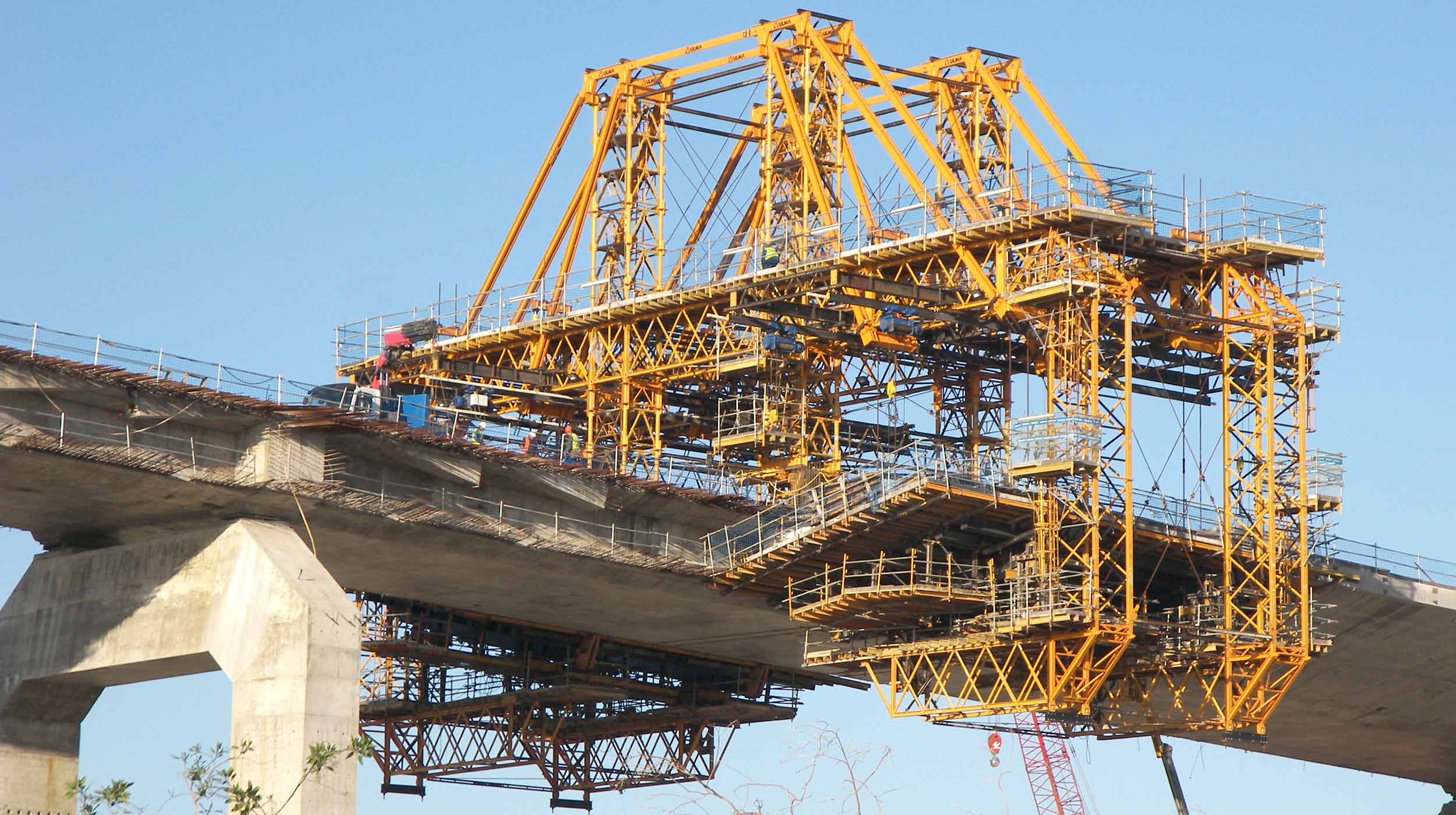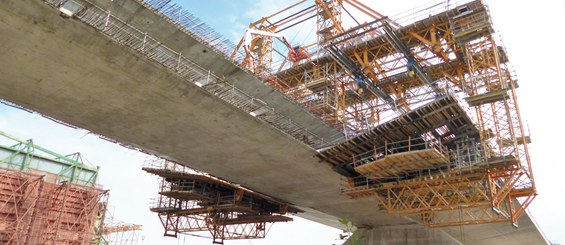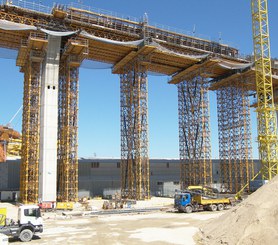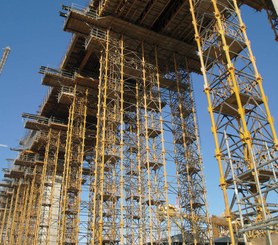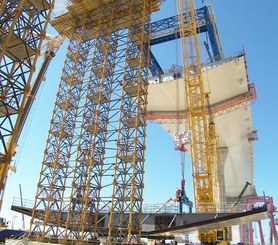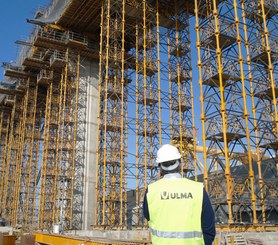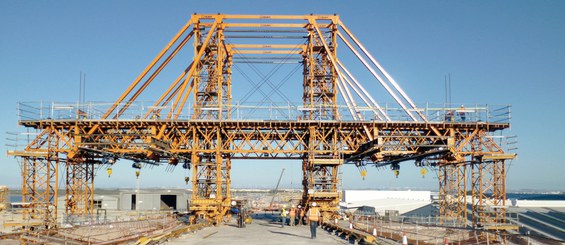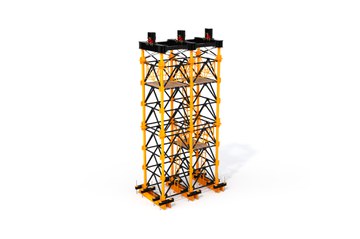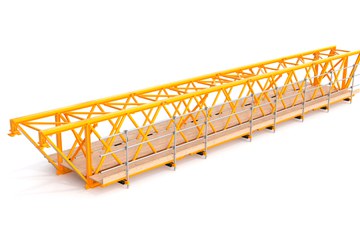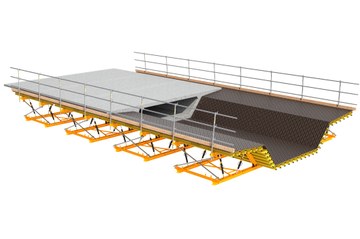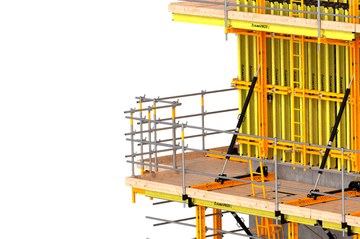Description
The Bay of Cadiz Bridge, popularly known as "La Pepa Bridge" with its 3,082 m long deck with variable widths between 31 and 33 m is going to be the longest bridge of Spain and one of the longest worldwide. It will also be one of the highest bridges in Europe with a vertical clearance of 69 m to enable the passage of large ships.
The technical complexity of this project in terms of dimensions, solutions and quantity of material has demonstrated ULMA's ability to face any challenge.
ULMA was involved in the construction of several bridge deck sections, in total 1,079 m. The deck section is large and has a complex interior geometry and a trapezoid-shaped outside with the parallel sides being 10 and 30 m long and having a variable height between 2 and 3 m.
ULMA Solution
The first 380 m long stretch next to the abutment consists of 9 piers with 40 m spans. The construction has been carried out in ten approximately 40 m long stretches. A standard stretch consisted of ¾ of a span plus ¼ of the next span left as cantilever. The constant section of the bridge deck of 2 m was built in a single pour. For this stretch, a full shoring configuration was used with the bridge formwork ENKOFORM HMK that offered robustness, safety and flexibility.
The second 79.5 m long stretch supported on two 12 m high piers was built with the same shoring system as the first one. In this case, it is a transitional stretch with a variable section of 2 to 3 m height. It had therefore been poured in several stages.
The bottom formwork for these two stretches had a variable inclination. This was solved by the design of a formwork unit made up of three parts hinged. This made it possible to build the entire stretch without changing the geometry.
The third stretch, 619 m long, consists of 9 spans with lengths ranging between 62 and 75 m between the piers and a maximum height of 40 m. Aiming for more efficiency, this stretch was built with a combination of two construction systems: gantry falsework with high load capacity T-500 towers, H-33 trusses and ENKOFORM HMK for the shaft and a large form carrier for the 10 m wide flanges on each side. The 48 m wide, 25 m high and 16 m long form carrier was used for the construction of 42 stretches with 15 m length each. The pouring cycle was two pours a week.

